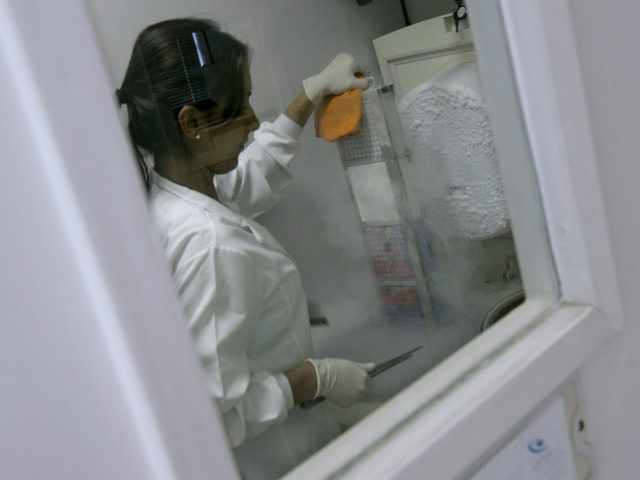A baby who was born after spending more than 27 years as a frozen embryo has set a new record for the longest frozen embryo to come to birth.
Molly Everette Gibson, daughter of Tina and Ben Gibson of Tennessee, was frozen on October 14, 1992 and born October 26, 2020.
Molly’s birth was facilitated by the faith-based National Embryo Donation Center (NEDC) in Knoxville. Carol Sommerfelt, NEDC lab director and embryologist, thawed Molly on February 10, while the organization’s president and medical director, Dr. Jeffrey Keenan, transferred the embryo to Tina’s uterus on February 12.
At birth, Molly weighed 6 pounds, 13 ounces, and measured 19 inches long.
According to a press release by NEDC, Molly’s full genetic sibling, Emma Wren Gibson, was born in 2017 and had developed from an embryo frozen for more than 24 years. Thus, Molly broke her own sister’s record for the longest-frozen embryo to come to birth. Both girls were frozen together as embryos.
“I think this is proof positive that no embryo should ever be discarded, certainly not because it is ‘old!'” said Keenan in a statement. “This is also a testament to the excellent embryology work of Carol Sommerfelt. She is perhaps the preeminent embryologist in the country when it comes to thawing frozen embryos. And, of course, it’s a testament to how good God is, and to His infinite goodness and love.”
Sommerfelt reflected on how the science behind embryo research underscores the ability to preserve embryos indefinitely and bring them to birth:
When Molly Everette was born on October 26, she was already 28 years old from the standpoint of the time the embryos had been frozen. This definitely reflects on the technology used all those years ago and its ability to preserve the embryos for future use under an indefinite time frame. It also shows the reason the NEDC mission is so important, giving all donated embryos the best chance for life.
“When Tina and Ben returned for their sibling transfer, I was thrilled that the remaining two embryos from the donor that resulted in Emma Wren’s birth survived the thaw and developed into two very good quality embryos for their transfer,” Sommerfelt added. “It was even more thrilling to learn 11 days later that Tina was pregnant. I rejoiced with Tina and Ben as we all anxiously waited for the arrival of their second child.”
According to NEDC’s website, the organization is considered a leader in embryo adoption, with its most recent reported pregnancy rate of 54 percent.
“Many donate embryos through the NEDC because of the peace of mind provided by our home study requirement, which means your embryos will go to a stable, healthy family,” NEDC states. “And all are reassured by our nearly two-decade-long track record and commitment to keep strengthening the NEDC long-term, ensuring the ability of embryo donors and recipients to receive and share information in the future.”
The organization notes that the success of assisted reproduction technologies, such as in vitro fertilization, has “created a surplus of frozen human embryos,” that are estimated to number about one million in the United States:
Many biological parents store their frozen embryos for future use. But when those parents have completed their families, they must decide what to do with their remaining embryos. Donating them to another infertile couple is an increasingly popular option. It benefits both the genetic family and the recipient family.
NEDC says it strives “to protect the lives and dignity of frozen embryos that would not be used by their genetic parents and to help other couples build the families they have longed for via donated embryos.”

COMMENTS
Please let us know if you're having issues with commenting.